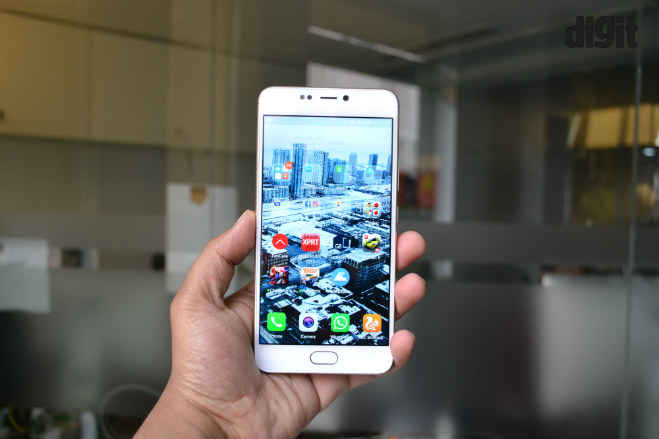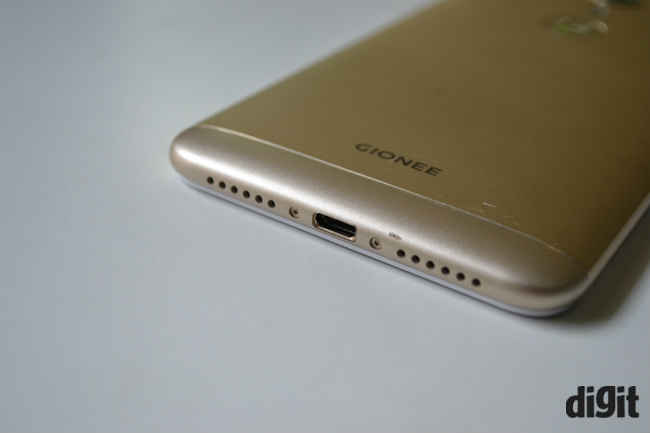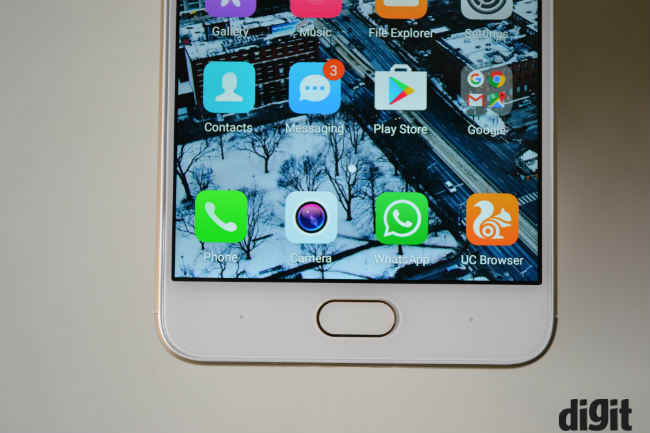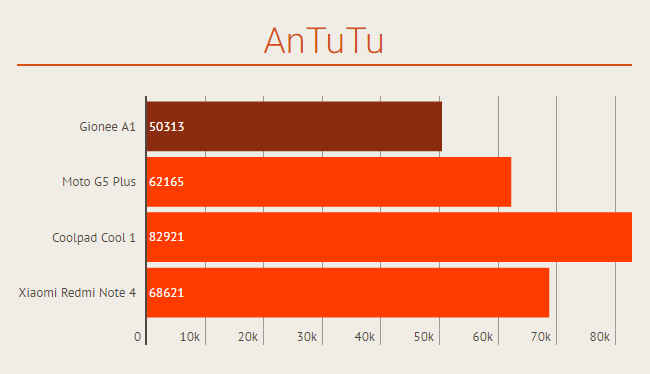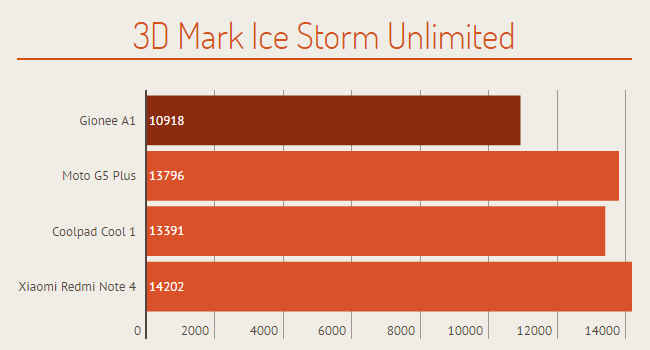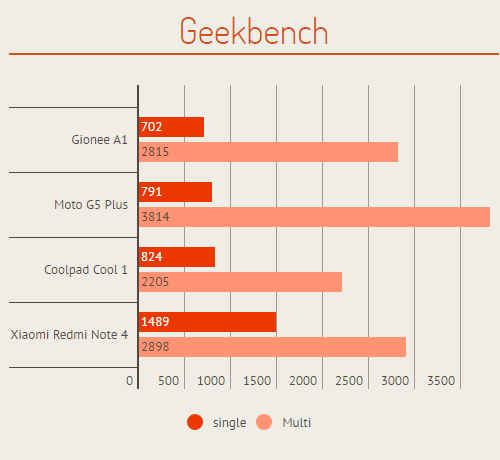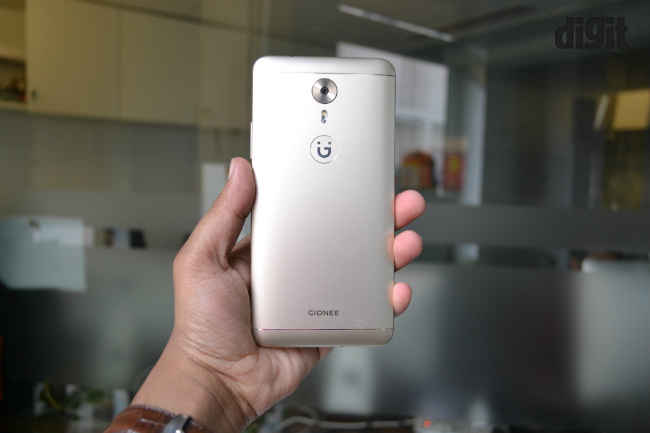Gionee A1 Review : Good camera, but not the overall package
The Gionee A1 is a decent smartphone that has a good display, offers acceptable performance for lightweight usage, and a very competent camera.
Front camera
The 16MP front camera produces good self-photographs on overall terms, and is evidently among the best front cameras in the market. Skin tones are still softened to make faces look brighter, and sharp edges and coarse textures also produce softness to smoothen out blemishes. However, you still get decent details on face textures, and the front camera module of the Gionee A1 is particularly impressive when there is ample light source around photographs.
Skin tones are not entirely accurate, but are not over-brightened, as a result retaining natural shades. Colours appear slightly undersaturated which leads to slightly flatter overall colours, but seeing that most selfie lovers also prefer to edit their photographs after taking them, this works fairly well. The front camera uses an f/2.0 lens which is the standard among selfie-centric smartphones like Oppo F3 Plus and Vivo V5 Plus. However, the A1 tends to keep backgrounds much sharper in comparison to the others, which include software-processed bokeh modes. This can produces varying results depending on the preference, but for the most part, we feel that the Gionee A1 could have done better to isolate subjects, an effect that does tend to make selfies look better.
Selfies shot in low light produce softer details, along with smoother skin tones. You also get a front-facing flash to compensate for lack of adequate light, which works in producing better low light selfies.
Rear camera
The rear camera on the Gionee A1 is a fairly competent package. The 13MP shooter uses a Sony IMX258 sensor, and is definitely one of the most capable cameras in the sub-20k segments. Photographs taken by the camera in daylight conditions produce vibrant colours and good dynamic range, along with fairly accurate white balance. The Gionee A1 impresses with overall detailing, although softness of fine details persist. It is also among the best in class in terms of colour accuracy and overall details.
Photographs shot in low light also produce appreciable colours and decent details, although there is evident coarse noise. The camera tends to shoot ISO levels high up when, which causes coarse grains in photos. Colours retain accuracy of tone even in low light as the A1 shoots ISO up, although the noise can be a bit of a bother in dark areas.
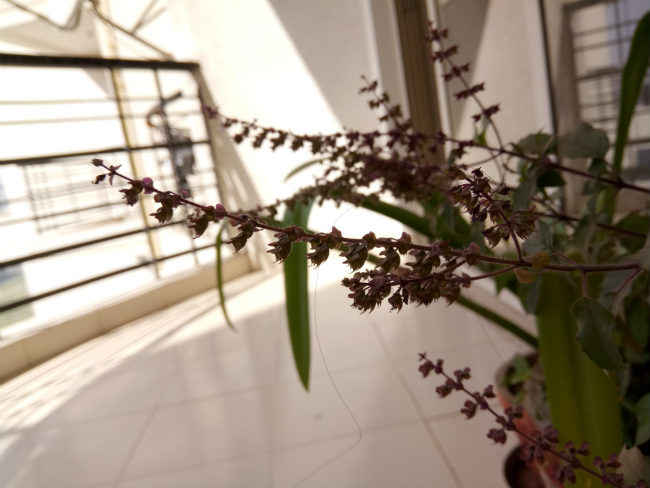
The camera app presents a number of modes, settings and filters. Features like beautification and time lapse work on both front and rear cameras, and you also get more modes like slow-motion, pro camera, GIF, barcode scanner and text translation.
Build and Design
The Gionee A1 is not really exemplary in terms of design. There are some small tweaks like bronze inlays on buttons and a slightly curved rear panel, but for the most part, the phone resembles every other budget smartphone on the market and the tweaks do little to add practical elements here. The chamfered edges break the flow of rounded edges in the designing, and do little to add any practical element here.
On the other hand, the rounded metal back with smooth, sandblasted finish and 2.5D curved Gorilla Glass on top go with the current standard in budget smartphones. The build quality feels better than phones like Xiaomi Redmi Note 4 and Moto G5 Plus, which in turn makes it look premium.
The power button and volume rocker offer decent, tactile feedback and are fairly sturdy. The fingerprint scanner on the front is integrated into the physical home button, and can unlock directly from idle. In terms of speed and accuracy, it is at par with the competition.
Display and UI
The 5.5-inch AMOLED display is one of the best attributes of the device. Colours look fairly natural, and are not as oversaturated as most AMOLED panels produce. Touch response is smooth, and an oleophobic coating on the screen repels fingerprints and smudges. Viewing angles are quite good without any majorly noticeable colour shifts, but the brightest viewing spot is at the central axis. Our tests showed maximum luminance of 590 lux at the centre of the display, which is quite decent considering the price.
Gionee's Amigo OS runs on Android Nougat, and you also get Google Assistant here. There is no app drawer. You get a dedicated Themes app, the quick toggles menu is a swipe away (swipe upwards) from the bottom, while the fingerprint scanner has a hidden menu, and so on. Over the years, Gionee has made the UI easier to use without changing the aesthetics of the interface. Hence, you still get the colourful interface and bright icons as well as the iOS-like settings menu, which is fairly intuitive to use.
The UI takes about 1GB of RAM, but sadly the entire OS + UI combo leaves only 52.61GB of usable space on the Gionee A1. Still, it performs reasonably well and is easy to use. The only issue we faced was in Internet connectivity. In two instances, the phone dropped mobile data and WiFi connectivity, connecting only after a restart. This could be specific to this device, but still warrants further observation.
Performance
The Gionee A1 is powered by a MediaTek Helio P10 SoC. Previous devices powered by this SoC hasn't yielded good results, but Gionee seems to have made the best of it. The octa-core SoC is clocked at 2GHz and does a decent job in overall day-to-day performance, with most lightweight apps loading fairly smoothly. Despite noticeable split-second delays in switching between apps like WhatsApp, Facebook and Gmail, the device does suffice for multitasking at work. Games do run at 30fps, but intermittently. This means that you will notice stutters while playing games like Asphalt 8, etc., but overall gameplay renders 27-28fps for the most part, which is decently playable.
The difference between the Gionee A1 and more powerful phones like Coolpad Cool1 or Moto G5 Plus is in app load times. On most budget devices, apps show a blank screen for a few seconds when loading, while games like Asphalt 8 freeze the phone while loading. This is not surprising or unnatural, but companies like Moto have done well to reduce these slight aberrations with background optimisations, and possibly the use of Snapdragon SoCs that are better tuned than the MediaTek Helio P10.
The Helio P10 has also been known to be quite heat efficient, and quite surprisingly, the Gionee A1 tends to heat up, with temperatures on the rear panel reaching up to 42 degrees Celsius. It is possible that the extra performance that Gionee churns out from the Helio P10 comes with this trade-off. Optimum temperature for most phones should be at 37 degrees Celsius at best, and the Gionee A1 overshoots the mark by a significant margin.
As far as call quality is concerned, it is at par with most devices in the price category. The phone supports 4G LTE and the device offers stable 4G speeds, even while travelling. We even used the phone as a WiFi hotspot and it never dropped the connection during our usage.
Battery Life
The Gionee A1 provides rather weak battery life, particularly considering the large 4010 mAh battery. It lasts for about a work day, but you do expect more from a battery this size, especially from the company that made the Marathon series. We recorded 7 hours and 34 minutes on the PCMark Battery Test, which is low compared to similar phones like the Lenovo P2. Using the Gionee A1 as a daily driver, with half an hour of gaming, about 2 hours of music streaming, 40 minutes of GPS navigation, an hour of calling and using social media apps, you get about 10-12 hours of battery life from this device. Gionee has also employed a fast charging technology called ‘Ultrafast Charge’, which can charge the phone in less than two hours, but it is not as fast as OnePlus’ Dash Charge.
Bottomline
Overall, the Gionee A1 is a decent smartphone that has a good display, offers acceptable performance for lightweight usage, and a very competent camera. But, it is not the overall winner, with an average design, and the weakest link being its battery life.
The Gionee A1 is a worthy choice considering its performance and quality of display in the sub-20k segment, but taking every element into consideration, is not the best smartphone to buy.
Hardik Singh
Light at the top, this odd looking creature lives under the heavy medication of video games. View Full Profile

